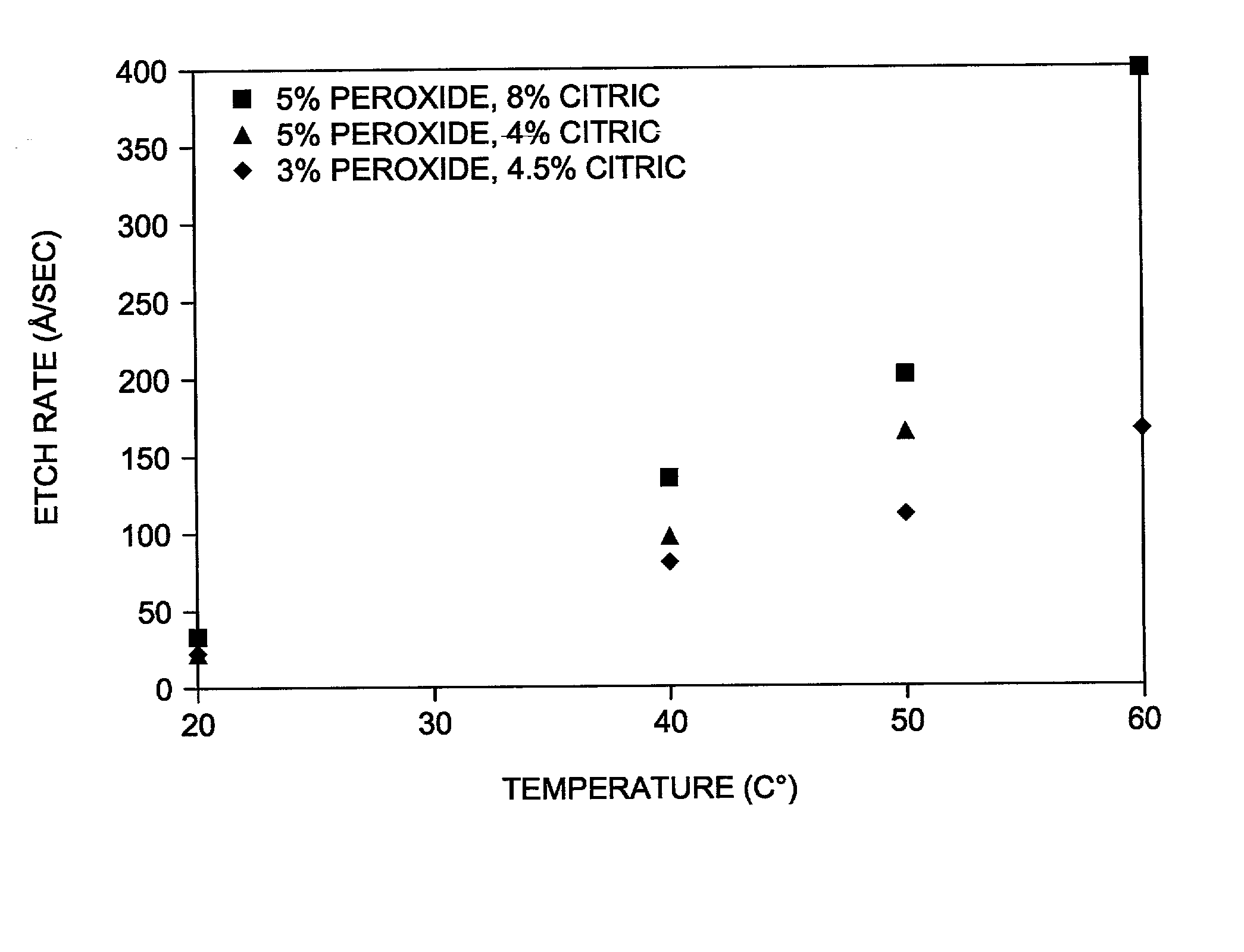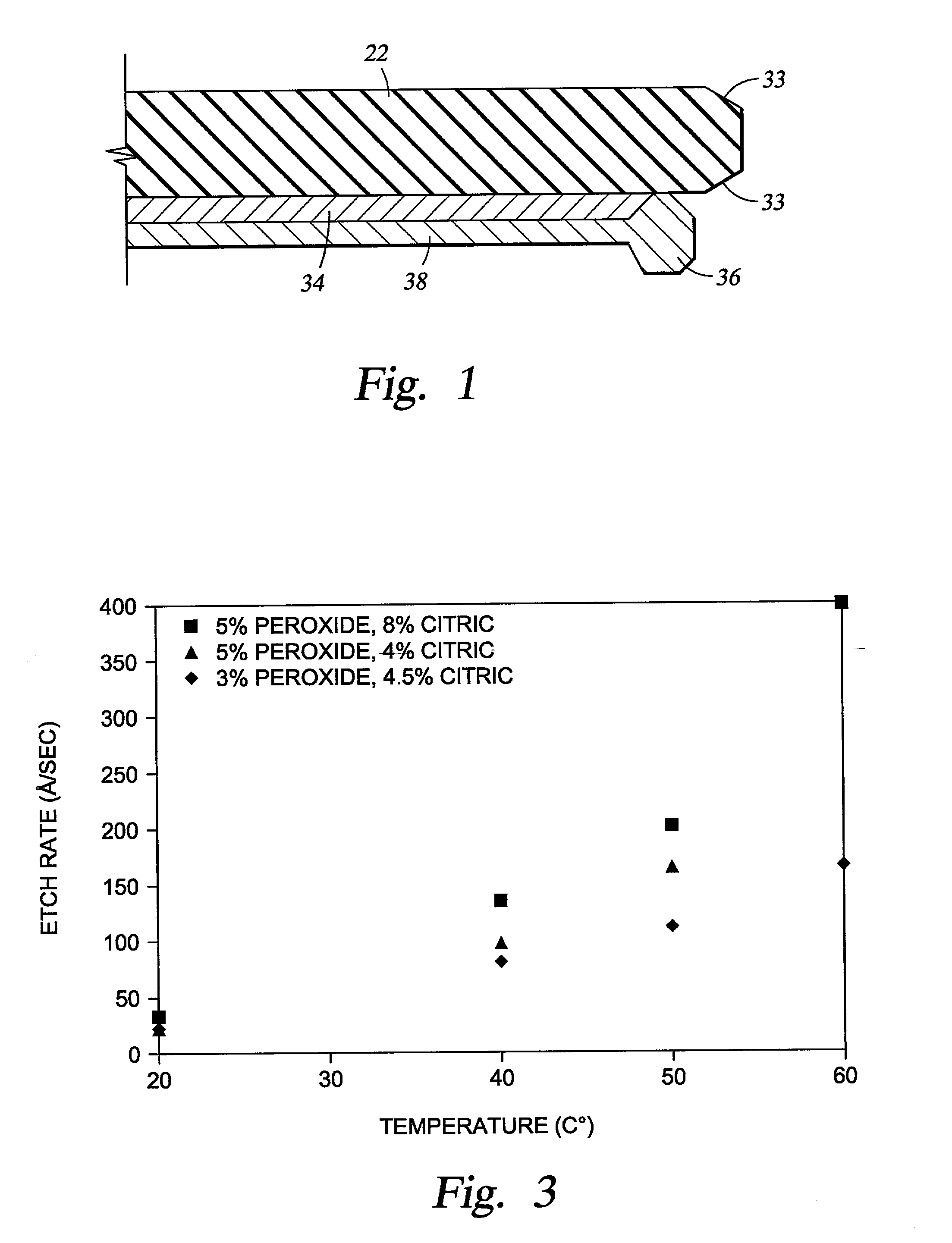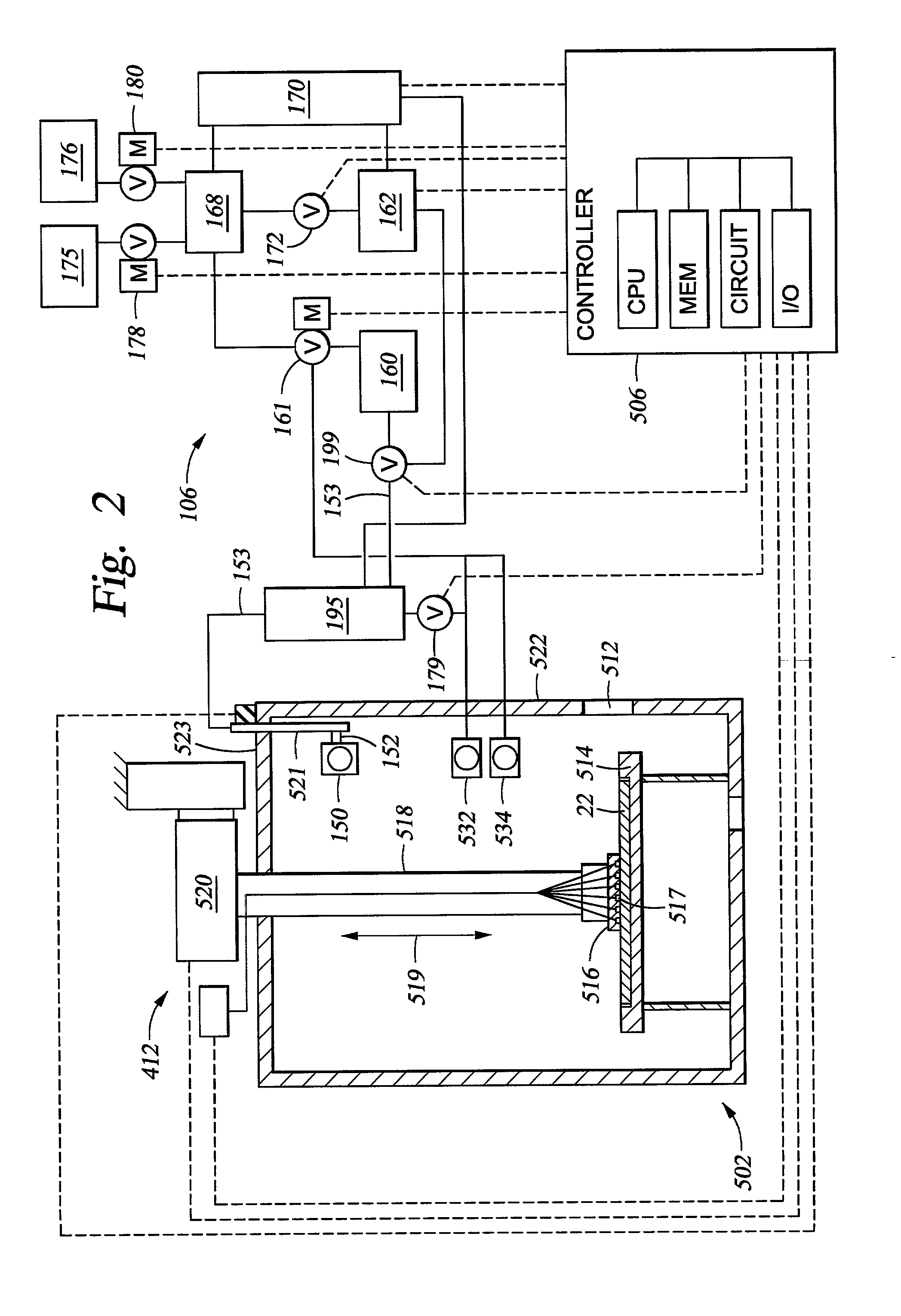Chemical mixture for copper removal in electroplating systems
a technology of chemical mixture and electroplating system, which is applied in the preparation of detergent mixture composition, detergent compounding agent, detergent composition, etc., can solve the problems of contamination of the substrate, unwanted metal deposits may form on undesired surfaces of the substrate, and metal layer deposited directly on the surface of the substrate exhibits poor adhesion to the substra
- Summary
- Abstract
- Description
- Claims
- Application Information
AI Technical Summary
Problems solved by technology
Method used
Image
Examples
Embodiment Construction
[0035] A chemical etchant composition of 5% by weight of hydrogen peroxide and 8% by weight of citric acid was prepared. The composition was heated to between about 20.degree. C. to about 60.degree. C. and dispensed onto the edge of a wafer using a disposable pipette held stationary at a distance of two millimeters above a wafer rotated at 70 rpm.
[0036] FIG. 3 summarizes the etch rate of the composition as a function of temperature. As shown in FIG. 3, a weak acidic etchant comprising 8% by weight of citric acid and 5% by weight of hydrogen peroxide achieved an etch removal rate of 400 angstroms per second. This etch rate is equivalent to etching a film of copper approximately 1 .mu.m thick in 15 seconds.
[0037] While foregoing is directed to the preferred embodiment of the present invention, other and further embodiments of the invention may be devised without departing from the basic scope thereof is determined by the claims that follow.
PUM
| Property | Measurement | Unit |
|---|---|---|
| temperature | aaaaa | aaaaa |
| temperature | aaaaa | aaaaa |
| temperature | aaaaa | aaaaa |
Abstract
Description
Claims
Application Information
 Login to View More
Login to View More - R&D
- Intellectual Property
- Life Sciences
- Materials
- Tech Scout
- Unparalleled Data Quality
- Higher Quality Content
- 60% Fewer Hallucinations
Browse by: Latest US Patents, China's latest patents, Technical Efficacy Thesaurus, Application Domain, Technology Topic, Popular Technical Reports.
© 2025 PatSnap. All rights reserved.Legal|Privacy policy|Modern Slavery Act Transparency Statement|Sitemap|About US| Contact US: help@patsnap.com



